![[Portrait of a convict] Fraser](/wp-content/uploads/2022/08/convict.png)
Convict life: a convict career
Over 75,000 convicts served time in Van Diemen’s Land. The Calcutta carried the first convicts from NSW in 1803 and the St Vincent disembarked the final convicts to Hobart in 1853. Until 1812 all VDL convicts came via NSW. These early convicts had poor documentation. The Indefatigible brought the first transported convicts directly from England in 1811. The term convict applied to those transported from England and its Colonies as well as those convicted locally.
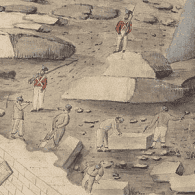
Convict life: The earliest arrivals 1803-1810
The resumption of the Napoleonic Wars in 1803 made the delivery of supplies to the new Colonies impossible. After the initial supplies ran out both the convicts and their masters were thrown upon their own resources. Those with skills were employed in building official buildings but very little official work was able to be done during this time, due to the lack of skills, equipment and supplies. The administration drew its authority from providing the necessities of life to the convicts, but in the absence of provisions anarchy threatened.
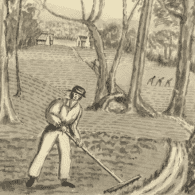
Convict administration – The Assignment Period 1803-1839
In this period, private settlers were made responsible for the food and clothing of their convict workers. Landholders were required to take on at least one convict for every 100 acres. Recordkeeping practices were designed to record each convict’s “career”. Convicts were physically described and their prior histories recorded. A rigid system was imposed providing rewards and punishments. More literate convicts could be placed in government service, while others on secondary punishment (about 10%) were sent to Port Arthur from 1830.
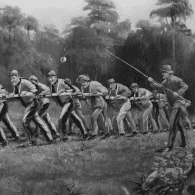
Convict administration – The Probation Period 1840-1853
A probation system replaced the assignment system for male convicts in 1840 following complaints that the system was an unfair ‘lottery’. On arrival convicts now served a period ‘on probation’ with stages of punishment. Convicts were imprisoned at a penal settlement, worked in gangs or were sent to probation stations. Depending on their behaviour they passed through stages, with restrictions reduced as they moved towards ‘Ticket of Leave’ status. More than 80 probation stations were constructed during this period. From 1844 Women spent their probation at Anson Station or New Town Farm.
- Forgotten and threatened: Reclaiming Tasmania’s probation system, 1839-53 – Richard Tuffin Fellowship project
- Convict probation system
- Male convicts – Probation period
- Female Convicts – Probation Period
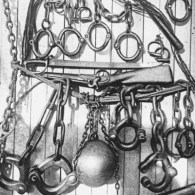
Treatment of convicts
Convict servants had a measure of power, as they were needed to ensure a productive economy. They were given a ration of food and clothing as set out in official regulations. Employers could give extra provisions, favours, free time, or even money to convicts to encourage ‘good’ behaviour. ‘Bad’ behaviour, such as drunkenness disobedience, insolence, neglect of duty, absconding from service, and abusive language, was punished. If a convict was mistreated by their employer they could appeal to the courts. However, a lost appeal meant further punishment.
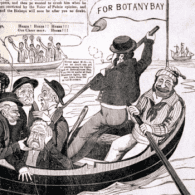
Convicts sent to mainland Australia
NSW received over 80,000 convicts between 1788 and 1842 when transportation to NSW stopped. Moreton Bay, Queensland acted as a place of secondary punishment for over 2,500 convicts from 1824 until 1842. From 1850 until 1868 just under 10,000 locally convicted prisoners and transported convicts were sent to WA’s Swan River Settlement.

Repeat Offenders
About 10% of convicts never left the system. Some died under the initial sentence while others reoffended. Those convicts on Australian shores were also called “convicts”. A few criminally insane remained at the Asylum Port Arthur until that closed in 1877.
![[View of the prisoners' barracks, Campbell Street]](/wp-content/uploads/2022/08/AUTAS001125299420.png)
Colonial Offences
About 10% of convicts never left the system. Some died as convicts while others reoffended. Those convicted locally of crimes were also known as convicts. A few criminally insane remained at the Asylum Port Arthur until that closed in 1877
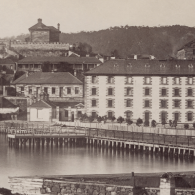
Penal establishments and secondary punishment
While most convicts were assigned to work roles, serious or repeat offenders were sentenced to secondary punishment institutions where the work was harsh and the punishment brutal. The first prison was built in Murray Street, Hobart (1817), followed by a convict barracks in Campbell Street (1821), and a prison in Launceston (1827).
Punishment stations were also established – Macquarie Harbour (1817), Maria Island (1825), Port Arthur (1830), and Point Puer boys prison (1834). Female convicts undertook punishments, such as the treadmill, at female factories.
- Macquarie Harbour and Sarah Island
- Port Arthur and Point Puer
- Maria Island
- Hobart Gaol / Prisoners barracks
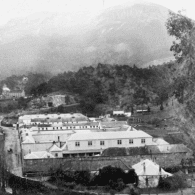
Life for female convicts
Convict women were primarily assigned as domestic servants. Many female convicts’ behaviour, questioning authority and social expectations, swearing, smoking, drinking, was seen by the establishment as indicating bad character. If a woman misbehaved while under assignment/service she was sent back to a female factory for punishment. Women were in the minority, with female convicts sought after as wives.
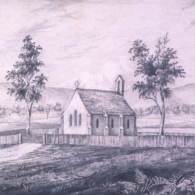
Family and indulgences
Convicts under sentence needed official permission to marry.This was seen as an “indulgence” or reward for good behaviour but in reality marriage was encouraged as a means to settle down both female and male convicts. Married convicts with family in the UK may also apply for the ”indulgence” of their families joining them in VDL. The family had the choice of coming or not. Other indulgences were being allowed to sleep outside barracks, to be released from irons, to have a ticket of leave and to have a sentence remitted.
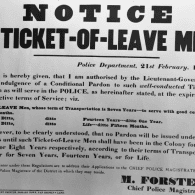
Steps to freedom
Convicts required formal documents ending their service. Early convicts were mainly given pardons, which could be given at any stage from first arrival in Australia to the end of their full sentence. Pardons could be absolute or conditional, with conditions usually restricting travel from the colony. Under Governor Arthur Tasmania maintained a more complex system. Initially convicts could gain a ticket-of-leave allowing them to seek employment. Tickets could be revoked. Certificates of freedom were issued at the end of a sentence or granted on the basis of good behaviour under a ticket-of-leave.
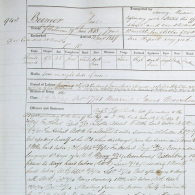
Convict records
With less formal processes and administration from NSW, very early convict records are minimal. Many simply include a name, where tried, ship and sentence. Once systems were established more information was collected including convict employment records, conduct records, descriptions, indents and indulgences. On arrival convicts provided information on their trade, crime, sentence, and family. This information was matched against that collected before transportation.

